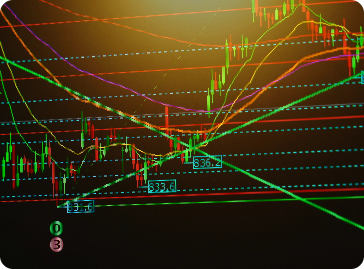US stocks rebounded sharply on Tuesday, regaining upside momentum and ending their previous slide as investors adjusted their expectations in response to Federal Reserve officials indicating that they’ll continue to raise interest rates but are open to slowing their tempo.
The market’s expectations of softer rate hikes from the Federal Reserve continued to provide support to the equity markets but activity was limited ahead of the FOMC Meeting Minutes and US Durable Goods Orders to be out on Wednesday. Market sentiment has improved despite the looming Covid woes from China and fears of economic slowdown in major economies challenge the energy demand. The focus now shifts to the FOMC Meeting Minutes, which may shed some light on whatever the Fed may do in December.
On the Eurozone front, most of the European Central Bank officials were paving the way for another 75 bps rate hike at the December meeting. ECB policymaker Robert Holzmann supported calls for a third straight 75 basis points (bps) rate increase.

The benchmarks, S&P 500 and Dow Jones Industrial Average both advanced higher on Tuesday as the S&P 500 closed at its highest level since Sept. 12 following upbeat earnings from a handful of retailers. The S&P 500 was up 1.4% daily and the Dow Jones Industrial Average climbed higher with a 1.2% gain for the day. All of the eleven sectors in the S&P 500 stayed in positive territory as the Energy sector and the Materials sector are the best performing among all groups, rising 3.18% and 2.23%, respectively. The Nasdaq 100 meanwhile advanced the most with a 1.5% gain on Tuesday and the MSCI World index was down 0.8% for the day.

Main Pairs Movement
The US dollar declined lower on Tuesday, remaining under pressure and extended its daily losses amid the better performance of global equities and weaker US Treasury yields. The greenback has marked broad losses ahead of crucial catalysts scheduled for publication today. Meanwhile, the Fed’s latest meeting minutes will be closely observed to confirm the chatters surrounding the economic transition and the 50 bps rate hike chatters.
GBP/USD climbed higher on Tuesday with a 0.53% gain as the cable regained upside traction and aimed to recapture the 1.1900 level during the US session as the market mood soars ahead of FOMC minutes. On the UK front, the release of the S&P PMI numbers will be significant for the market participants. Meanwhile, EUR/USD manages to regain some composure and rebounded towards the 1.0310 area amid a weaker US dollar across the board. The pair was up almost 0.60% for the day.
Gold advanced slightly with a 0.13% gain for the day after retreating from a daily high near the $1750 mark during the US trading session, as the expectations for Fed’s 50 bps rate hike keep acting as a tailwind for the precious metal. Meanwhile, WTI Oil picked up bids with a 1.14% gain for the day amid the headlines surrounding the G7 nations’ discussions on the oil price cap on Russian exports.
Technical Analysis
EURUSD (4-Hour Chart)

The EURUSD pair recovered some ground on Tuesday after shedding over 100 pips at the beginning of the week. The advance, however, was modest, with the pair trading around the 1.0280 level as of writing. The equities market performed better, with most stock indices holding on to modest gains and putting pressure on the US dollar. Meanwhile, US Treasury yields remain subdued, giving up most of their Monday’s gains. In Eurozone, European Central Bank officials continue to favour a 75 bps rate hike, and the move would raise the deposit rate to 2.25%. Furthermore, Finnish ECB policymaker Olli Rehn said the ECB would continue to raise interest rates, and the pace of its hikes will be determined by the rate of inflation and the overall economic situation. Elsewhere, concerns about the coronavirus situation in China remain the same. The country reported another increase in national cases, and Beijing shut down public places such as parks and museums. The potential economy limits high-yielding assets’ gains.
From the technical perspective, the four-hour scale RSI indicator modestly climbed to 50 figures as of writing, suggesting the pair was amid recovery momentum. As for the Bollinger Bands, the pair was pricing in the lower area and challenging the 20-period moving average resistance, which indicates that the pair have no decisive tendency. As a result, we think the pair would hover in a range from 1.0200 to 1.0400 shortly.
Resistance: 1.0475, 1.0604
Support: 1.0298, 1.0167, 0.9953
GBPUSD (4-Hour Chart)

The GBPUSD has managed to stage a rebound after having dropped below 1.1800 on Monday but confronting some sellings during the US trading session. The pair was priced at the 1.1870 level as of writing. In the absence of high-impact macroeconomic data releases, the risk perception is likely to drive the pair’s action. China reported more than 28000 new local cases on Monday and the city of Beijing announced that it will be shutting down parks and museums from Tuesday. Markets remain worried about a global economic downturn with China possibly refraining from moving away from its zero Covid policy. In domestic, the cables draw support from expectations that the Bank of England will continue to combat stubbornly high inflation. Moreover, reports that the UK government privately discussed the possibility of a Swiss-style relationship with the European Union further boosting the British pound. However, a bleak outlook for the UK economy could cap any further gain for the pair. The Uk Office of Budget Responsibility last projected the UK GDP to slump by 1.4% next year as compared to a growth of 1.8% forecast in March.
From the technical perspective, the four-hour scale RSI indicator rebounded to 56 figures as of writing, suggesting that the pair was surrounded by positive traction. As for the Bollinger Bands, the pair was breaking through the 20-period moving average and was trading in the upper area, and drawing support from the lower band of 1.1780 level, which is a signal that the pair has not made a decisive move.
Resistance: 1.2028, 1.2145
Support: 1.1765, 1.1647, 1.1366
XAUUSD (4-Hour Chart)

The XAUUSD regains some positive traction on Tuesday and snaps a four-day losing streak, as benefiting from the fresh US dollar selling. The US dollar was under some selling pressure and halts the recent rebound from its lowest level since August 12, which, in turn, is seen as a tailwind for the Dollar-denominated gold. Investors seem convinced that the Federal Reserve (Fed) will slow the pace of its rate-hiking cycle and have been pricing in a greater chance of a relatively smaller 50 bps lift-off at the December meeting. This is evident from a modest downtick in the US Treasury bond yields and weighs on the USD. However, the recent hawkish signals from several Fed officials suggest that the US central bank will continue to tighten its monetary policy to tame stubbornly high inflation. This should boost the US Treasury bond yields and help limit losses for the US dollar. In the meantime, worries about economic headwinds stemming from a new COVID-19 outbreak in China and the imposition of fresh lockdowns could benefit the greenback’s status as the global reserve currency. In addition, signs of stability in the financial markets might also contribute to capping the upside for the safe-haven precious metal.
From the technical perspective, the four-hour scale RSI indicator was wandering in a range from 35 to 50 as of writing, suggesting that the investors stay cautious for the day and the pair witnessed some negative traction. As for the Bollinger Bands, the pair was capped by a 20-period moving average and pricing at the lower area. Therefore, we think gold was more favoured to the downside path in the near term.
Resistance: 1784, 1800
Support: 1748, 1704, 1670
Economic Data
| Currency | Data | Time (GMT + 8) | Forecast |
| NZD | RBNZ Interest Rate Decision | 09:00 | -4.25% |
| NZD | RBNZ Rate Statement | 09:00 | |
| NZD | RBNZ Rate Statement | 10:00 | |
| EUR | German Manufacturing PMI (Nov) | 16:30 | 45.0 |
| GBP | Composite PMI | 17:30 | 47.2 |
| GBP | Manufacturing PMI | 17:30 | 45.7 |
| GBP | Services PMI | 17:30 | 48.0 |
| USD | Building Permits | 21:00 | 1.526M |
| USD | Core Durable Goods Orders (MoM) (Oct) | 21:30 | 0.1% |
| USD | Initial Jobless Claims | 21:30 | 225K |
| USD | New Home Sales (Oct) | 23:00 | 570K |
| USD | Crude Oil Inventories | 23:30 | -1.055M |



























